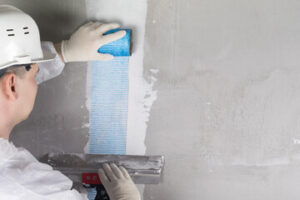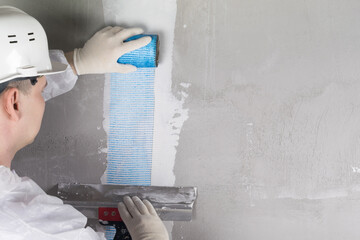If your stucco siding starts to look dirty and worn, you should remove it. The textured surface of stucco makes it easy for dust and dirt to build up, and it can also attract mold and mildew. Stucco can also deteriorate from water seeping through it, which can cause a lot of damage to the walls of your home. This can lead to structural issues and mold growth.
 Removing stucco can be a difficult and time-consuming process. Hiring a professional Stucco Repair Philadelphia who is experienced and equipped with the necessary tools and equipment to complete the job safely and efficiently is important. Stucco removal may also be necessary for building renovations or upgrades or to replace stucco with a different exterior finish. A reputable stucco removal contractor can help assess the needs of the building and provide guidance on the best course of action for stucco removal and replacement.
Removing stucco can be a difficult and time-consuming process. Hiring a professional Stucco Repair Philadelphia who is experienced and equipped with the necessary tools and equipment to complete the job safely and efficiently is important. Stucco removal may also be necessary for building renovations or upgrades or to replace stucco with a different exterior finish. A reputable stucco removal contractor can help assess the needs of the building and provide guidance on the best course of action for stucco removal and replacement.
Stucco removal is a process that occurs when a property owner wants to change the look of their building or when damage has occurred and stucco must be removed to protect the structure from further damage. It’s a fairly easy process that involves workers loosening a small area of stucco with a hammer and then using a chisel or a pry bar to remove the stucco.
To make this process easier, a contractor should prepare the surface by removing any furniture or other items that can be moved away from the wall and by placing a tarp beneath the work site to catch falling debris.
It’s important to wear safety goggles and gloves when working with stucco. This will prevent fragments from entering your lungs. It is also important to make sure the area is well-ventilated during the removal process.
The stucco wall system is susceptible to many damaging conditions, from UV rays to moisture to installation errors. These conditions can lead to fading, cracks, discoloration, and even mold.
In order to determine if you need repairs or remediation, it is important to know what the warning signs are for your stucco wall system. Look for small cracks and gaps around your windows and doors that could indicate moisture or mold.
Oftentimes, these are signs that the damage is surface level. However, it is always a good idea to have a professional inspect the stucco for underlying issues.
After thoroughly cleaning your stucco, you should apply a new coat of paint to the stucco in order to protect it from further damage. If you live in an area with harsh weather conditions, you might want to consider applying a quality paint that is specially formulated to prevent color fading.
After stucco removal, it is important to make sure the area is clean. This is because debris can get into cracks and holes in the stucco, which could lead to mold or mildew.
A good way to ensure the stucco surface is completely cleaned is to use a concentrated cleaning solution. These solutions can be found at home improvement stores and are effective at removing stains caused by dirt, grime, mold, and algae growth.
However, it is important to note that some of these cleaners may need to be mixed with bleach to effectively eliminate stains caused by mildew and mold. Always follow the manufacturer’s instructions for mixing these products.
Another method for ensuring the stucco is fully cleaned is to use a power washer. This is a safer way to clean the exterior of your house, but you should be careful not to use too much pressure on the surface.
Whether you are doing it yourself or hiring someone else, there are some things that you can do to prepare for the work ahead of time. This way, you can get everything done properly and avoid any problems down the line.
Before the stucco removal process starts, it is important to do a thorough inspection of your home’s exterior. This will ensure that you do not accidentally damage your siding, which can lead to more expensive repairs in the future.
For example, if you notice that there are spider cracks or any other signs of deterioration, you should get them taken care of as soon as possible. If they are not, they can cause significant damage to your home and its foundation.
Stucco can also have a negative effect on your home’s exterior by attracting unwanted dirt and debris. This can cause a variety of problems, including mold. To help prevent this, check your windows and door frames for any small gaps that could allow water to penetrate.
